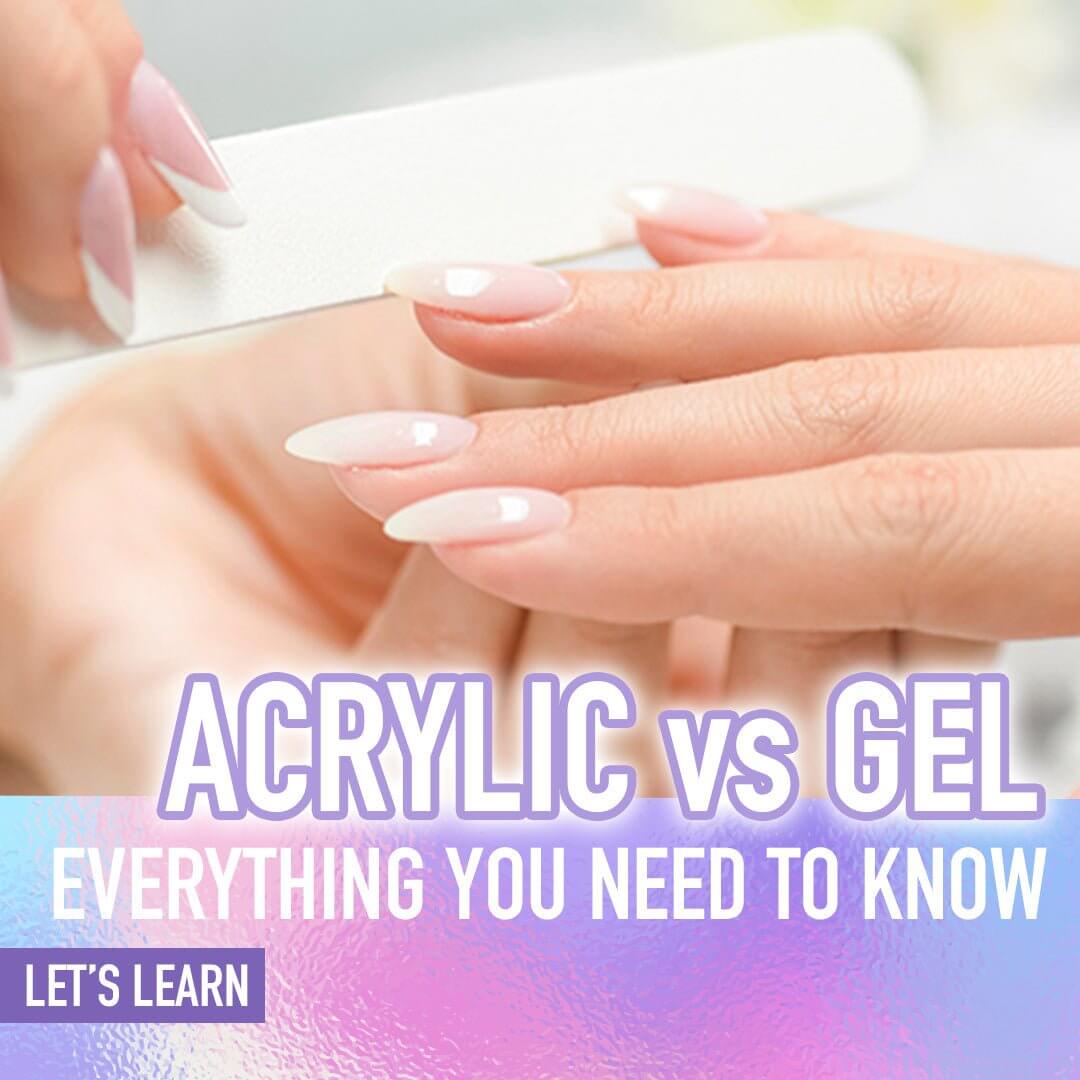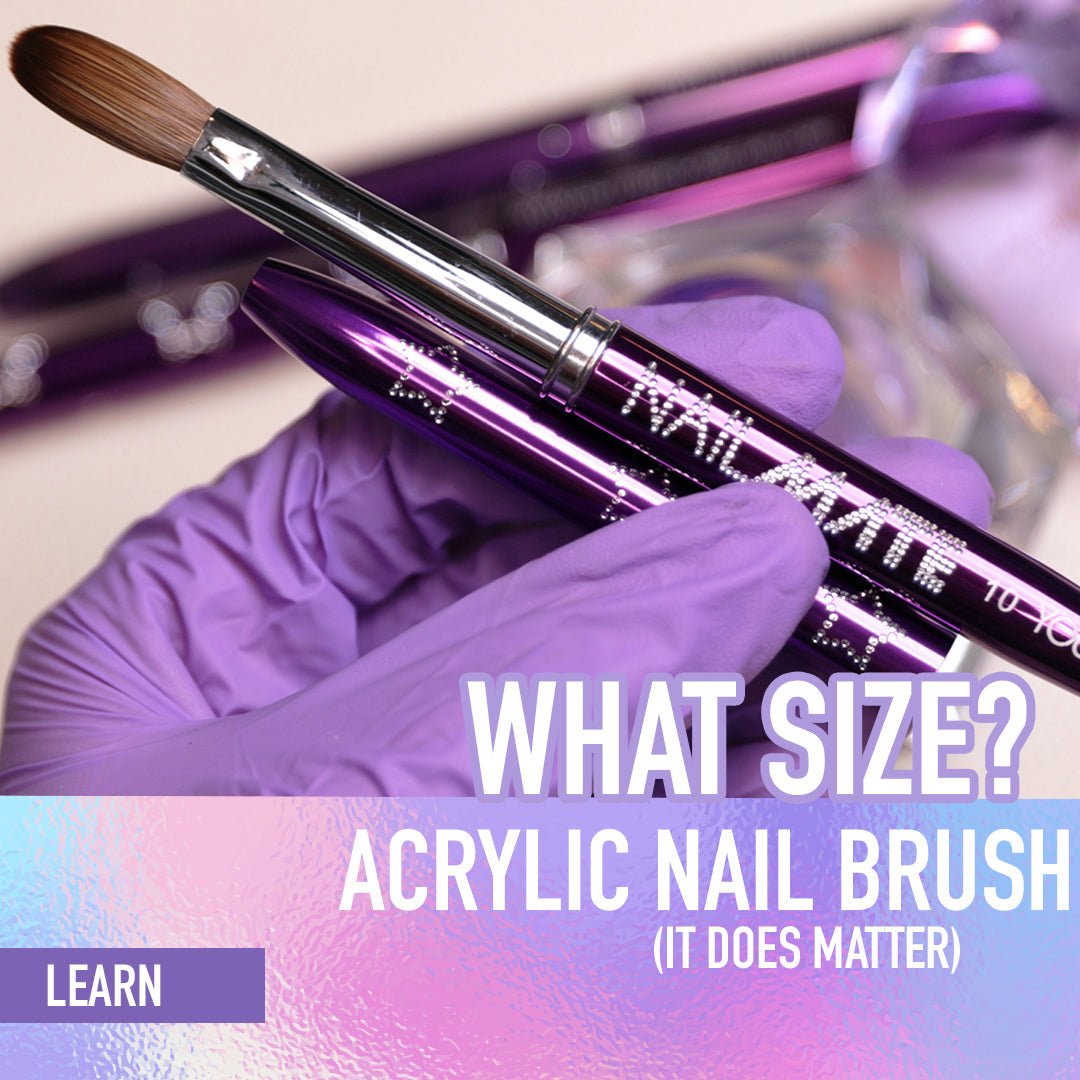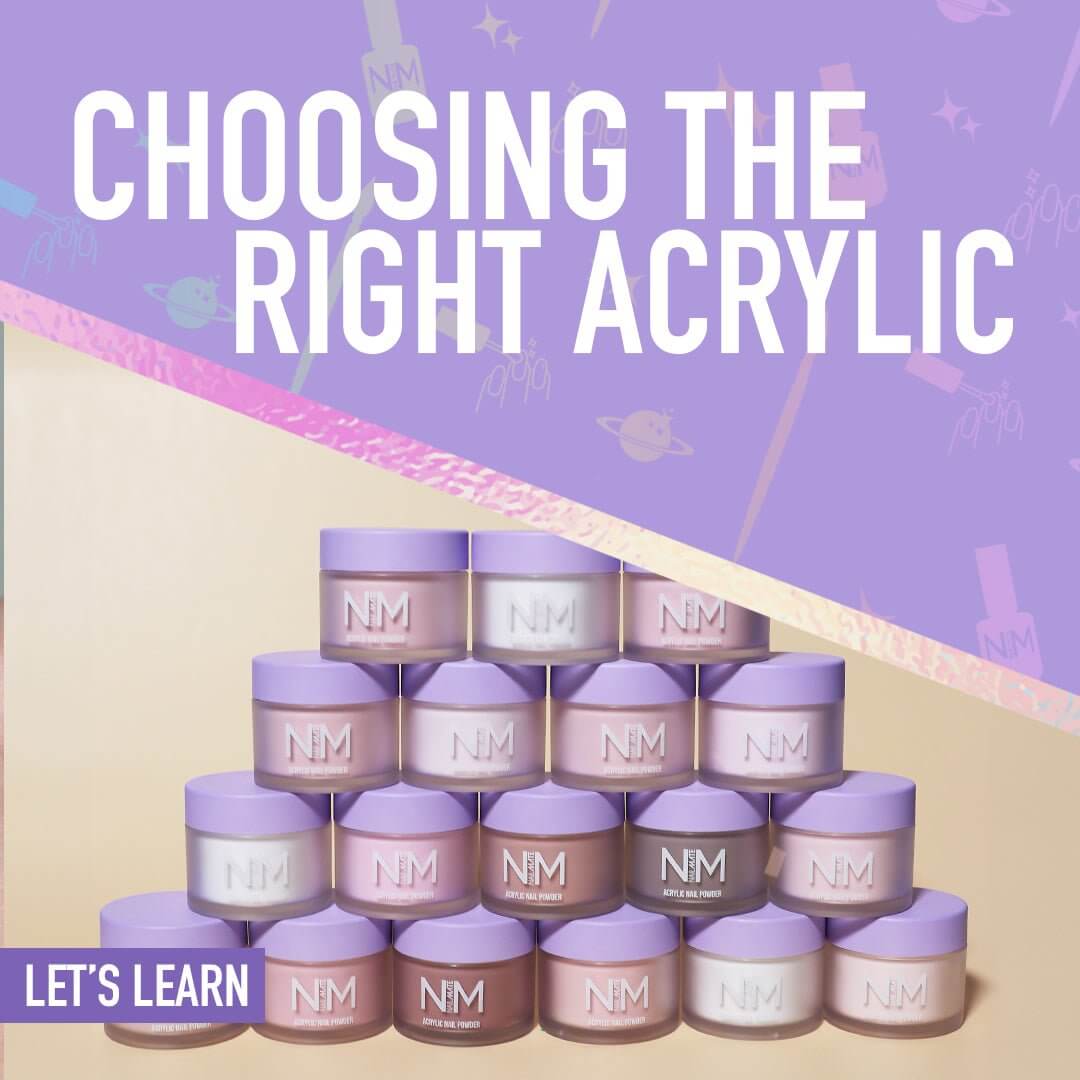When it comes to nail enhancements, the debate between acrylic nails and gel nails has been ongoing. Both options can give you stunning, long-lasting results, but the best choice depends on your lifestyle, nail health, and personal preferences. In this blog, we’ll compare the pros and cons of acrylic nails and gel nails to help you make an informed decision. We’ll dive into durability, application processes, maintenance, removal, and more to ensure you pick the right option for your unique needs.

Acrylic Nails: Pros and Cons
Acrylic Nails are created using a mixture of liquid monomer and powder polymer to form a hard protective layer over your natural nails. Acrylics are one of the most popular and time-tested options for enhancing nails, especially if you’re looking for strong, durable extensions.
Pros:
• Durability: Acrylic nails are known for their strength. They can withstand a lot of wear and tear, making them ideal if you have a hands-on job or lifestyle.
• Versatility: You can easily shape and style acrylic nails into long, dramatic shapes, such as square, coffin, or stiletto.
• Repairable: If an acrylic nail chips or breaks, it can often be repaired without having to remove the whole nail.
• Great for weak nails: Acrylics provide a hard, protective shell that can prevent weak, brittle nails from breaking.
Cons:
• Appearance: While acrylics can be beautiful, they can to look less natural than gel nails, especially if not applied by a skilled technician.
• Strong odor: The chemicals used in acrylics have a strong smell, which can be unpleasant during the application process. You can use low odour monomer, wear a mask and open a window to reduce any smells.
• Thick application: Acrylic nails can sometimes feel thicker and heavier compared to gel nails depending on the designs chosen. If you want a more natural look opt for an acrylic overlay.
• Damage to natural nails: Improper application or removal can result in damage to your natural nails, making them thin and prone to breakage.

Gel Nails: Pros and Cons
Gel Nails are another popular option, offering a more flexible and natural-looking alternative. They are applied in layers and cured under a UV or LED light, creating a shiny, glossy finish that mimics the look of natural nails.
Pros:
• Natural look: Gel nails tend to look more natural, as they’re thinner and mimic the appearance of healthy natural nails.
• Shine and finish: Gel nails are incredibly glossy and maintain their shine throughout the duration of wear.
• Flexibility: Gel nails are more flexible than acrylics, making them feel lighter and more comfortable, but means they aren't as strong.
• No strong odor: Unlike acrylics, gel nails don’t have a pungent smell during application.
Cons:
• Less durable: Gel nails, while beautiful, aren’t as strong as acrylics. They’re more prone to chipping, especially if you use your hands a lot.
• More expensive: Gel nails typically cost more than acrylics, both in terms of application and maintenance.
• Curing time: You need a UV or LED light to cure the gel, which can add time to the application process.
• Difficult to repair: If a gel nail chips or cracks, it usually requires removal and reapplication, unlike acrylics, which can be fixed more easily.
Let's Compare Durability, Application, Maintenance, and Removal for both Gel & Acrylic nails.
Durability
• Acrylic nails: Highly durable, ideal for individuals who use their hands frequently or are prone to breaking nails. They can last up to 3-4 weeks before needing a fill.
• Gel nails: Less durable than acrylics but still long-lasting, with an average wear time of 2-3 weeks. They are more flexible, making them prone to minor chips, but they maintain their glossy finish.
Application Process
• Acrylic nails: A liquid monomer is combined with a powder polymer to form a hard substance that is shaped on the nail. The process requires precision to avoid damaging the natural nail.
• Gel nails: Gel polish is applied in layers and cured under a UV or LED light after each coat. The process is odorless and can be quicker, but the curing time under the lamp adds to the overall time.
Maintenance
• Acrylic nails: Acrylics require regular maintenance, including fills every 3-4 weeks as the natural nail grows out. Acrylic nails are relatively easy to repair if damaged.
• Gel nails: Gel nails require fills as well, every 2-3 weeks to avoid breakages. Chips in gel nails are harder to fix without a full removal.
Removal
• Acrylic nails: Removal requires soaking the nails in acetone for around 20-30 minutes, which can dry the natural nails if done too frequently so you should only need to soak off maybe twice a year.
• Gel nails: Gel nails also need to be soaked off with acetone, though some types of gel (like soft gel) may be easier to remove. Improper removal can peel or damage the natural nail.
Which Is Right for You: Acrylic or Gel?
Now that we’ve covered the basics, let’s dive into which option might be the best for you based on specific factors:
Lifestyle
• Acrylic nails: Ideal for people with active, hands-on lifestyles. They’re strong and can withstand more wear and tear, making them great if you’re frequently working with your hands.
• Gel nails: Better suited for those with a less active lifestyle or someone who prefers a lighter, more flexible nail enhancement.
Nail Health
• Acrylic nails: If your natural nails are weak, acrylics can add significant strength, though over time they may weaken your nails if not applied or removed properly. So make sure you go to a professional.
• Gel nails: Gel nails are more flexible on your natural nails and can be easier to remove without causing too much damage.
Budget
• Acrylic nails: Typically more affordable than gel nails, both in terms of the initial application and maintenance. But this can vary based on design chosen and which nail tech you visit.
• Gel nails: Usually more expensive upfront and for subsequent fills.
Maintenance
• Acrylic nails: Require regular fills every 3-4 weeks, and repairs are relatively easy if you experience chipping or breakage.
• Gel nails: Need fills every 2-3 weeks, but repairs can be more time-consuming since chipped gel nails often require removal and reapplication.
How the Nails Look
• Acrylic nails: Offer a more dramatic, solid look and are perfect if you like bold nail art or long, sculpted extensions.
• Gel nails: Provide a more natural, glossy appearance. If you prefer nails that look like they could be your own, gels are the way to go.

Conclusion
Whether you choose acrylic nails or gel nails, it ultimately depends on your personal preferences, budget, and lifestyle. Acrylic nails are perfect if you need long-lasting, strong nails, while gel nails are ideal for those who want a lighter, more natural look. Each option has its own benefits and drawbacks, so consider your specific needs when making your choice.
By understanding the pros, cons, and key factors like durability, application, maintenance, and appearance, you’ll be well on your way to choosing the perfect nail enhancement for you 💅🏻
You Might like these blog posts...
What is the best acrylic to use if I have sensitivity to HEMA?
If you are experiencing HEMA irritation we recommend the HEMA-free Acrylic System. Shop here
What is the main cause of Allergies to nail products?
The main cause of allergies to nail products is improper use by the person applying the products. All nail products are made up of chemicals and need to be applied properly in order to reduce the risk of allergies.










